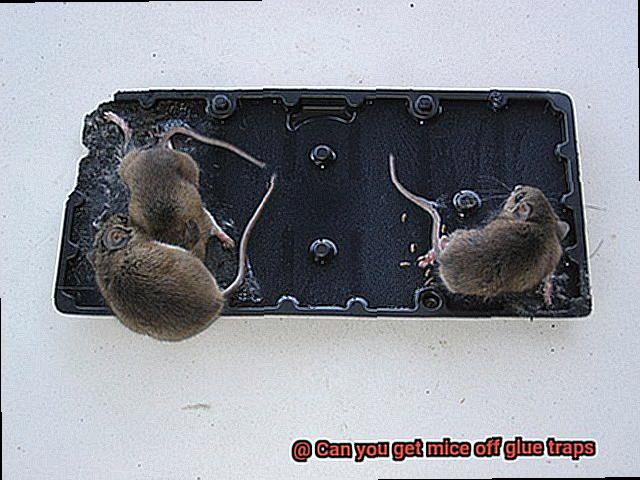You’re enjoying a peaceful evening in your cozy living room when you hear a tiny scratching sound coming from the attic. You shudder, wondering if you’ve got mice – something many homeowners dread. But how did they get up there? Do mice even frequent upper floors? The answer, unfortunately, is yes.

Image: www.petrescueblog.com
Mice are incredibly adept climbers and can easily navigate to even the highest points of your home. Understanding how they get to the second floor, and what you can do to prevent them, is crucial to protecting your home and your peace of mind. This article dives into the world of mice and uncovers the strategies they use to invade your upper levels.
The Mouse’s Journey: How They Climb to the Second Floor
1. They Are Natural Climbers:
Mice are incredibly agile creatures with surprising physical abilities. Their small size and flexible bodies allow them to squeeze through gaps and openings only a fraction of their own size. Their sharp claws provide excellent traction on walls and even smooth surfaces. Remember, even the smallest opening can be an entry point for a determined mouse.
2. Plumbing Pipes:
A common entry point for mice is through pipes that run up through the house. These pipes offer a hidden and protected path for mice to travel from the basement or lower levels to the second floor. They can easily climb these pipes, using their claws to grip the rough surfaces.

Image: gluethings.com
3. Electrical Wiring:
Similar to pipes, mice can utilize electrical wires as a convenient route. The small spaces between electrical wires, especially in poorly sealed areas, provide a perfect entry point. Once inside, they can easily climb the wires to reach higher floors.
4. Overhanging Tree Branches or Vines:
Don’t underestimate the power of nature! A strategically placed tree branch or a thick vine can be a highway for a mouse to your second story. The same applies to structures like porches or decks that are connected to your home.
5. Open Doors:
This might seem obvious, but don’t forget the crucial role of open doors and windows. Even if the windows are closed, a gap between the frame and the window, or a damaged screen, is enough for a determined mouse to squeeze through.
Identifying Signs of a Mouse Infestation on the Second Floor
It’s important to understand that mice are adept at hiding and their presence might not be immediately obvious. Here are some common signs that can alert you to a possible problem:
1. Droppings:
Look for small, dark droppings about the size of a grain of rice. These are often found in corners, behind appliances, or near food sources.
2. Scratching Sounds:
As mentioned earlier, mice often make scratching or gnawing noises, especially at night or when they’re active.
3. Rub Marks:
Mice leave oily rub marks along their pathways, especially where they frequently travel. These marks can be found on walls, doorframes, or under furniture.
4. Urine Odor:
A strong, ammonia-like odor is a clear sign that mice are present. They urinate frequently, and these droppings are a potent source of the odor.
5. Damaged Items:
Mice love to gnaw, so look for signs of damage to food packages, insulation, or even furniture.
Preventing Mice from Reaching Your Second Floor: A Comprehensive Approach
Now that you know how mice can reach your second floor, it’s time to take preventative action. Here’s a layered approach to keep those pesky rodents at bay:
1. Seal Up Entry Points:
An ounce of prevention is worth a pound of cure. Inspect the exterior of your home for any potential gaps or openings, including:
- Damaged window/door screens
- Cracks around windows and doors
- Gaps in the foundation
- Vents and air conditioners
- Unsealed pipes and wires
Caulk or seal any openings with steel wool, fiberglass mesh, or a high-strength sealant.
2. Keep Food Secure:
Mice are attracted to food, so make sure you’re not making it easy for them. Store dry goods in airtight containers. Clean up spills promptly, and don’t leave pet food out overnight.
3. Maintain a Clean Space:
Keeping your house tidy goes a long way. Regularly sweep, vacuum, and remove clutter to get rid of potential nesting spots.
4. Trim Overhanging Trees and Vines:
Remove any potential bridges from trees branches or vines that connect to your home.
5. Use Repellents:
Repellents, while not always foolproof, can be helpful to deter mice. Peppermint oil, cayenne pepper, mothballs, and ultrasonic devices are some common options.
6. Contact a Professional:
If you are unable to handle an infestation yourself, don’t hesitate to contact a pest control professional. They have the expertise and tools to effectively remove mice and prevent future infestations.
Can You Get Mice On The Second Floor
Conclusion
Mice are resourceful creatures that can find their way to even the most seemingly inaccessible parts of your home, including the second floor! By understanding how they climb and applying effective preventative measures, you can protect your home and your family from these unwanted guests. Remember, vigilance and proactive solutions are key to maintaining a mouse-free environment. Share your experiences with us in the comments section, and let’s work together to keep those pesky rodents at bay.





